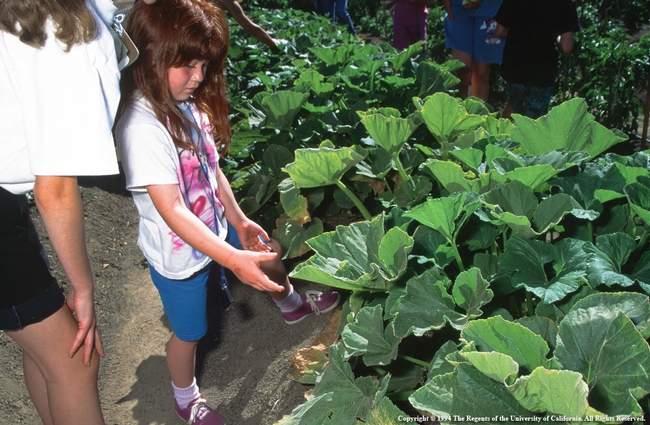Marin County's waitlists for community gardens can be up to four years long. Exacerbating that problem is the fact that it can take up to seven years to launch a new garden. Clearly, the demand for community gardening is not being met in the county.* The problem is complicated by the fact that there are eleven separate municipalities in Marin, in addition to the unincorporated county lands and 19 school districts.
Of the approximately 75 public schools in the county, 50 have school gardens, most of which have problems sustaining their school garden programs, particularly in the summer time, and particularly in the lower-income communities of the county. A well-supported comprehensive school garden program is an uphill battle considering this fragmentation, but steps are being made.
Despite the individual wealth in many of our cities, our low-income communities suffer from a significant health and income disparity. This disparity shows up in longevity rates: in the Marin municipality of Ross, the average longevity is 88 years, and in the Canal area of San Rafael, the average longevity is 77.4 years – a 10.6 year difference. In one area of Novato, the difference is even greater at 75.2, or 12.8 years.** A big part of the solution to this health disparity is access to better nutrition. For educational reasons, as well as actual produce production, community and school gardens are a part of the solution and can be an integral part of a healthy and active lifestyle.
The Canal Community Garden in San Rafael took nearly eight years to launch, getting approvals, raising money, and finally building. The process was like pulling teeth in large part because policies are not in place to streamline approvals, and little funding has been dedicated to the issue. Additionally, public awareness of the important benefits of community gardens is still low. Potential benefits include community resilience, improved health, environmental benefits, community building, outdoor education, reduction in crime rates, and savings on food bills.
Individual residents' objections are often ill founded, or gardens are misunderstood. Most community gardens now adhere to strict performance standards which prevent many of the problems that residents imagine. Both broader public awareness of the benefits, and streamlining city ordinances would help facilitate approvals. This is true despite the fact that many city officials try to champion these projects.
Mill Valley's, original community garden, for example, has a waitlist of more than 70 people; a several year wait. Although many city officials supported the idea of a second community garden, it has taken seven years to launch the second 38-bed garden. It is the exceptional case when a community garden is launched is less time. Often the shorter time period is because the land and/or water is privately owned by faith-based institutions or individuals, and in one case, a golf course!
Efforts coordinated by The Marin Food Policy Council (MFPC) and UCCE Marin took on this problem on a couple years ago. Their focus is on food security in lower-income communities. The county has 32 low-income schools, defined by 30% or more of their student body on the government program Free and Reduced Meal Program (FRMP). They developed templates for planners, commissioners, and city council members to list community gardens in zoning codes as a “permitted use”, and charged a UCCE Marin Community Garden Program Coordinator to identify and develop a map of potential sites for community gardens in the county, and “encourage garden management support through meet-ups, garden tours, and a conference.” The meet-ups and tours provide a place for the exchange of ideas and best practices. The Coordinator position also allows for a centralization of some of the school and community garden material and resource needs such as seeds, starts, tools, compost, mulch, via seed/tool libraries, banks, material yards, or simple donations. Countywide garden volunteer coordination is part of this effort as well.
The fragmentation in the county makes these efforts very challenging, but it is exciting to push forward Marin County Urban Ag in this way!
*Marin County Community Garden Needs Assessment, University of California Cooperative Extension, Marin. December 2010
**A Portrait of Marin: Marin County Human Development Report, 2012. (MeasureOfAmerica.org)
